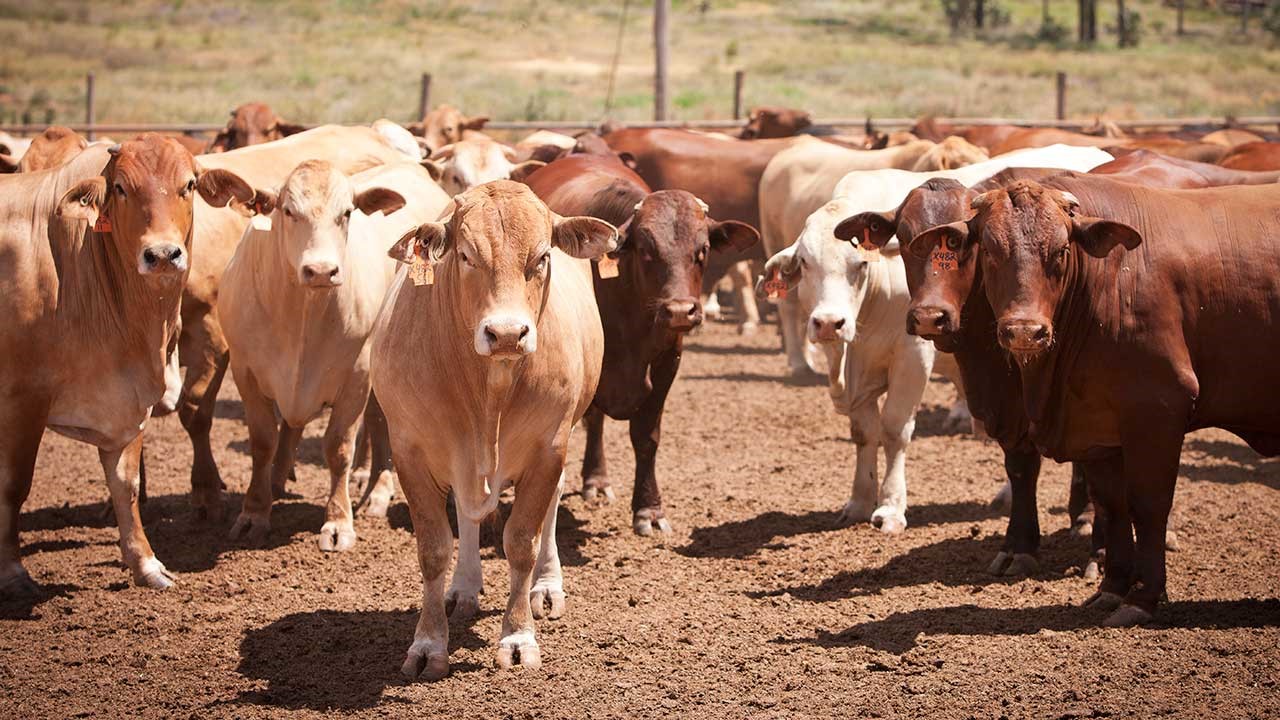Utilizing the Power of Constance Cattle: Making The Most Of Efficiency and Return on Your Farm
Utilizing the Power of Constance Cattle: Making The Most Of Efficiency and Return on Your Farm
Blog Article
Master the Art of Food Preparation With Lawn Fed Meat
In the realm of cooking know-how, understanding the art of food preparation with grass-fed meat holds a prestigious position. From the tender structure to the durable taste account, grass-fed meat provides a canvas for cooking imagination.
Benefits of Grass-Fed Meat

When choosing grass-fed meat, consumers can gain from its greater degrees of omega-3 fatty acids and antioxidants contrasted to conventionally elevated meat. Constance Cattle. Omega-3 fats are important nutrients that sustain mind wellness, lower swelling, and promote heart wellness. Grass-fed meat is understood to have up to 5 times much more omega-3 fats than grain-fed meat, making it a much healthier selection for those looking to raise their intake of these advantageous fats
Along with omega-3 fats, grass-fed meat is also richer in anti-oxidants such as vitamins E and C, in addition to beta-carotene. Anti-oxidants play a vital role in securing cells from damages caused by cost-free radicals, which can add to various chronic diseases and accelerate aging. By choosing grass-fed meat, customers can not just delight in an extra nutrient-dense and flavorful healthy protein source but also sustain their general health and wellness and health.
Including grass-fed meat into your diet regimen can be a simple yet effective means to improve your nutritional consumption and enjoy the advantages of omega-3 fats and antioxidants that are normally plentiful in this kind of meat.
Ideal Food Preparation Methods
Utilizing appropriate food preparation approaches is necessary to maintain the nutrient account and improve the flavor of grass-fed meat. When cooking grass-fed meat, it is necessary to bear in mind that it is leaner than traditionally raised meat, making it extra prone to drying out if overcooked. To make certain a juicy and flavorful outcome, think about cooking grass-fed meat at a little reduced temperature levels than you would certainly with grain-fed meat.
Barbecuing is a popular approach for food preparation grass-fed meat as it allows excess fat to drip away, stopping flare-ups that can create charring. Another great food preparation approach for grass-fed meat is pan-searing.
Sluggish cooking strategies such as braising or cooking are also excellent options for tougher cuts of grass-fed meat, as they help break down the muscular tissue fibers and tenderize the meat. Whichever food preparation technique you choose, bear in mind to let grass-fed meat remainder after cooking to enable the juices to rearrange, guaranteeing a wet and tender final dish.
Flavor Pairings and Seasonings
To improve the natural tastes of grass-fed meat, calculated taste pairings and spices play an important function in boosting the total dining experience. Grass-fed meat has a rich, distinct taste that can be complemented and improved by very carefully picked ingredients. When it concerns taste pairings, herbs like rosemary, oregano, and thyme work remarkably well with grass-fed beef, lamb, or bison. These herbs include depth and earthiness to the meat, boosting its natural tastes without subduing them.
Along with natural herbs, spices such as black pepper, garlic, and smoked paprika can further raise the taste profile of grass-fed meat recipes. These flavors give a balance of heat, sweet taste, and smokiness that can improve the general dining experience. When seasoning grass-fed description meat, it is necessary to Look At This use top notch salt, like sea salt or Himalayan salt, to draw out the meat's flavors without including unneeded chemicals or ingredients.
Storage Space and Dealing With Tips
Proper storage and handling techniques are necessary for maintaining the quality and quality of grass-fed meat. When storing grass-fed meat, it is essential to maintain it refrigerated at temperatures listed below 40 ° F(4 ° C) to protect against bacterial development and wasting. To expand the meat's life span, take into consideration wrapping it securely in parchment paper or butcher paper before placing it in an airtight container or secured plastic bag - Constance Cattle. Avoid storing grass-fed meat near strong-smelling foods as it can take in odors quickly.
When taking care of grass-fed meat, it is essential to exercise good hygiene to stop cross-contamination. Laundry your hands extensively prior to and after dealing with the meat, and ensure that all utensils and surface areas that enter call with the meat are cleansed and sterilized effectively. In addition, utilize different reducing boards for meat and vegetables to stay clear of microbial transfer.

Leading Grass-Fed Meat Recipes
When thinking about the finest methods to relish the high quality and quality of grass-fed meat, discovering excellent recipes can raise your cooking experience. Grass-fed meat's abundant taste and leaner profile provide themselves well to a variety of recipes that highlight the all-natural benefits of the meat.
If you remain in the state of mind for something lighter, a Grilled Grass-Fed Hamburger served with fresh toppings and a side of sweet potato fries is a tasty selection. Furthermore, a Herb-Crusted Grass-Fed Shelf of Lamb roasted to excellence with a collection of natural herbs and breadcrumbs is a show-stopping meal for special events. These leading grass-fed meat dishes showcase the versatility and exceptional quality of grass-fed try this site meat, permitting you to enjoy its superior taste in different cooking creations.

Final Thought
To conclude, grasping the art of food preparation with grass-fed meat provides many benefits, including boosted nutritional value and remarkable flavor. By using the most effective cooking methods, try out taste pairings and flavorings, and complying with correct storage space and taking care of suggestions, you can produce tasty and nourishing dishes. Try some leading grass-fed meat recipes to elevate your cooking abilities and take pleasure in the full potential of this top quality ingredient.
When cooking grass-fed meat, it is crucial to remember that it is leaner than conventionally elevated meat, making it much more susceptible to drying out if overcooked. To ensure a juicy and savory result, take into consideration cooking grass-fed meat at slightly reduced temperature levels than you would with grain-fed meat.
When seasoning grass-fed meat, it is important to make use of top notch salt, like sea salt or Himalayan salt, to bring out the meat's flavors without adding unneeded chemicals or additives.
Grass-fed meat's rich flavor and leaner account provide themselves well to a variety of recipes that highlight the natural goodness of the meat. These leading grass-fed meat recipes display the convenience and exceptional quality of grass-fed meat, enabling you to appreciate its exceptional preference in various cooking productions.
Report this page